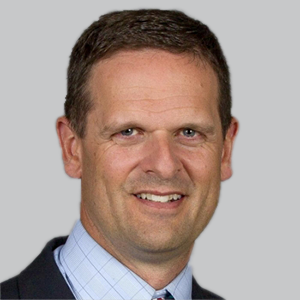Article
Stanford Children’s Health: A Comprehensive Approach to Care for a Child With a Neurological Condition
Author(s):
Key Takeaways
- Pediatric neuroscience care demands a unique, coordinated approach, focusing on collaboration and advanced technology to enhance patient outcomes.
- Multidisciplinary teams at Stanford Children’s Health create individualized treatment plans for children with neurological disorders, improving quality of life.
Physicians from Stanford Children’s Health offer their keys to successful pediatric neuroscience teams and what to focus on to provide a better quality of life for children.
Gerald Grant, MD, FACS

When caring for and treating children, it is important to keep in mind that they are not simply small adults and that they require a unique and coordinated treatment plan. Successful pediatric neuroscience teams focus on providing a better quality of life for children through collaboration on overall patient care, technological advancements, patient safety, and implementation of innovative medical treatments and devices.
Whether a child or adolescent is suffering from a head injury or a neuromuscular disease, their well-being is an essential part of their overall treatment plan. This requires a nurturing environment and personalized experience for every patient.
Fostering Collaboration Across Departments
In a children’s hospital, collaboration is key. At Stanford Children’s Health, we tap into experts across the Stanford ecosystem, from neurology and neurosurgery, radiology, psychology, nursing, pathology, and bioengineering, to create a seamless experience for children with neurological disorders and foster a unique, smart, and safe place for these kids. With a deep bench of providers, we have experts who work across several different departments in order to help treat the specific needs of the brain.
For example, for patients with spina bifida or epilepsy, collaborating with various experts in the early planning stages of treatment allows for specially individualized treatment for each patient and their families. With support from other teams like orthopedics, development pediatrics, and physical therapy, we aim to improve the quality of life for each patient.
Leadership also encourages our multidisciplinary, collaborative culture—even with those who do not step foot in the hospital daily, such as a psychology expert or a researcher, who can contribute to patients’ care plans. One way we do this at Stanford Children’s Health is in weekly epilepsy conferences, where experts across many specialties discuss patient cases with severe epilepsy despite treatment with multiple medications and how best to leverage the tools available to have the best outcome and become seizure-free.
Paul Fisher, MD

We also collaborate closely with Stanford University School of Medicine and neighboring Stanford Health Care to leverage expertise in multiple subspecialties in close collaboration. For example, by working with our neurosurgery and ear, nose, and throat (ENT) skull base partners at the adult hospital, we were able to perform an endoscopic skull base surgery to resect a brain tumor on a 2-year-old patient—the smallest child to undergo this surgery—which is a rare operation for pediatric patients that is more commonly performed in adults. By tapping into a wealth of experience and understanding each other’s strengths and how to utilize them to benefit the patient improves care for the future and the present. With long-term patients, this collaboration creates a clear path for the transition from pediatric care to adulthood.
Optimizing the Patient Experience With Technology
Leveraging new technology with an integrated neuroscience team approach helps optimize the patient experience and outcomes. For hospitals around the country, it is a testament to those who understand the value of investing in cutting-edge technologies.
Located in the heart of Silicon Valley, our center operates with the understanding that advanced technology is not useful without a team that can work together seamlessly to apply it successfully. It is a catalyst for innovations that are proven to improve patient outcomes, including:
- Advanced robotics: Lucile Packard Children’s Hospital was the first hospital in Northern California to offer ROSA, a robotized surgical assistant. The accuracy with which the robot’s computer brain can guide its robotic arm facilitates 3D mapping, which helps determine the best trajectory to minimize collateral damage to adjacent brain tissue. Our surgeons can also rely on the ROSA to manipulate instruments as thin as a needle during minimally invasive brain surgery, and to decipher the epileptic network and seizure focus in a child with medically refractory seizures.
- The Synaptive Medical Platform: This platform overlaps several tests, including a positron emission tomography (PET) scan, magnetoencephalography (MEG), and various magnetic resonance imaging (MRI), to map brain structure and seizure onset and spread. These tests are studied by a multidisciplinary team, including neurosurgeons, epileptologists, clinical neurophysiologists, neuropsychologists, and neuroradiologists to understand a patient’s brain activity. We were the first children’s hospital in the world to offer this technology.
- The Neuro-hybrid suite featuring intraoperative MRI: Allows care teams to accomplish multiple procedures in close proximity under one anesthesia event. With dedicated Neuro Pediatric Intensive Care Units (PICU), specialized neuro-nursing teams can provide specialized neurocritical care.
- Stereo EEG (sEEG): This procedure places dozens electrodes in the brain to pinpoint precisely where in the brain of young patients seizures are starting and makes resection surgeries much safer and more effective at curing seizures.
- 3D Visualization: With Surgical Theater, 3D virtual reality helps neurologists map, rehearse, and perfect an approach ahead of surgery that would maximize the amount of tumor removed while protecting critical structures.
Outside the walls of the hospital, telehealth provides an extra level of accommodation and customization for patients’ families—increasing access and reach via digital means and even more opportunity for close collaboration. This virtual approach has been even more beneficial during the pandemic, allowing for real-time advancements such as uploading local imaging from home and eliminating the need to send brain and spine imaging by mail.
Focus on the Patient
The child or adolescent patient needs to be at the heart of every conversation with a specific focus on what will best benefit their needs and treatment. With the right recipe of collaboration and innovation, care teams can learn from other specialties’ experiences, and from each other, to provide comprehensive care enabling individualized care for each patient, resulting in improved patient experience and outcomes.
To hear more from Grant and Fisher about their experience at Stanford Children’s Health, listen to their exclusive interview on the NeurologyLive Mind Moments podcast by clicking here: Episode 22: Capitalizing on Collaboration in Neurology Care.
Paul Fisher, MD, is professor of neurology and chief of child neurology at the Brain and Behavior Center at Stanford Children’s Health. Gerald Grant, MD, FACS, is endowed professor of neurosurgery and chief of pediatric neurosurgery at the Brain and Behavior Center at Stanford Children’s Health. Lucile Packard Children’s Hospital Stanford, at the center of the Stanford Children’s Health network, and one of U.S. News & World Report’s top 10 children’s hospitals in the nation for neurosurgery, is set apart from other children’s hospitals because of its ability to deliver comprehensive care.
Newsletter
Keep your finger on the pulse of neurology—subscribe to NeurologyLive for expert interviews, new data, and breakthrough treatment updates.




